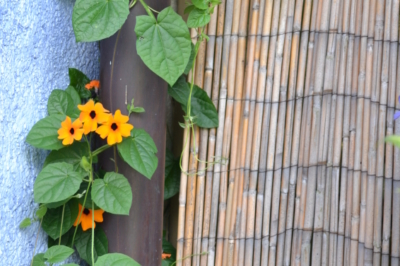Black-eyed Susanne is a climbing plant from Africa whose flowers and leaves are even edible. So it is doubly worthwhile to plant the pretty plant as a screen in the garden. You can propagate it yourself to grow enough plants for the garden and balcony.

How to propagate the black-eyed susan
There are two ways to propagate black-eyed susan. Either you collect mature seeds from the plants in late summer or you cut cuttings from August or January.
Both methods do not always have the desired success. The seed germinates irregularly, and with self-collected seed is also far from every little grain.
Cuttings need ideal conditions and a lot of care so that they take root and later grow in height.
Propagation by seed
Seeds can be purchased at garden supply stores if you want to grow multiple flower colors in your garden. However, you can also harvest the seed from your own black-eyed Susans.
Leave some flowers to develop seed pods. The seeds will mature in them. The seed is ripe when the capsule is dry and can be easily pushed open.
The seeds, which look like small bowling balls, are ejected. To collect them, you should put a plastic bag around the seed pod to catch the seeds.
Sowing the seeds
- Fill seed tray with growing soil
- Sow seeds
- Cover with soil
- Keep moist
- Keep warm until emergence
- Prick out later
- Propagation by cuttings
- Cut cuttings from your black-eyed susan either starting in August or from January to March.
Use sharp, clean knives and cut only those shoots that are long enough, still green and not woody.
Put the cuttings in growing soil, keep them moist, and place them in a warm, bright spot. They are grown when new pairs of leaves have formed.
Bring outside from the end of May.
Do not put the freshly grown plants outside until the end of May, as black-eyed susans are not hardy.
Tips & Tricks
If you have enough space indoors to overwinter many black-eyed susans, cut cuttings when you bring the plants into winter quarters. You’ll have to cut the climber back then anyway.

